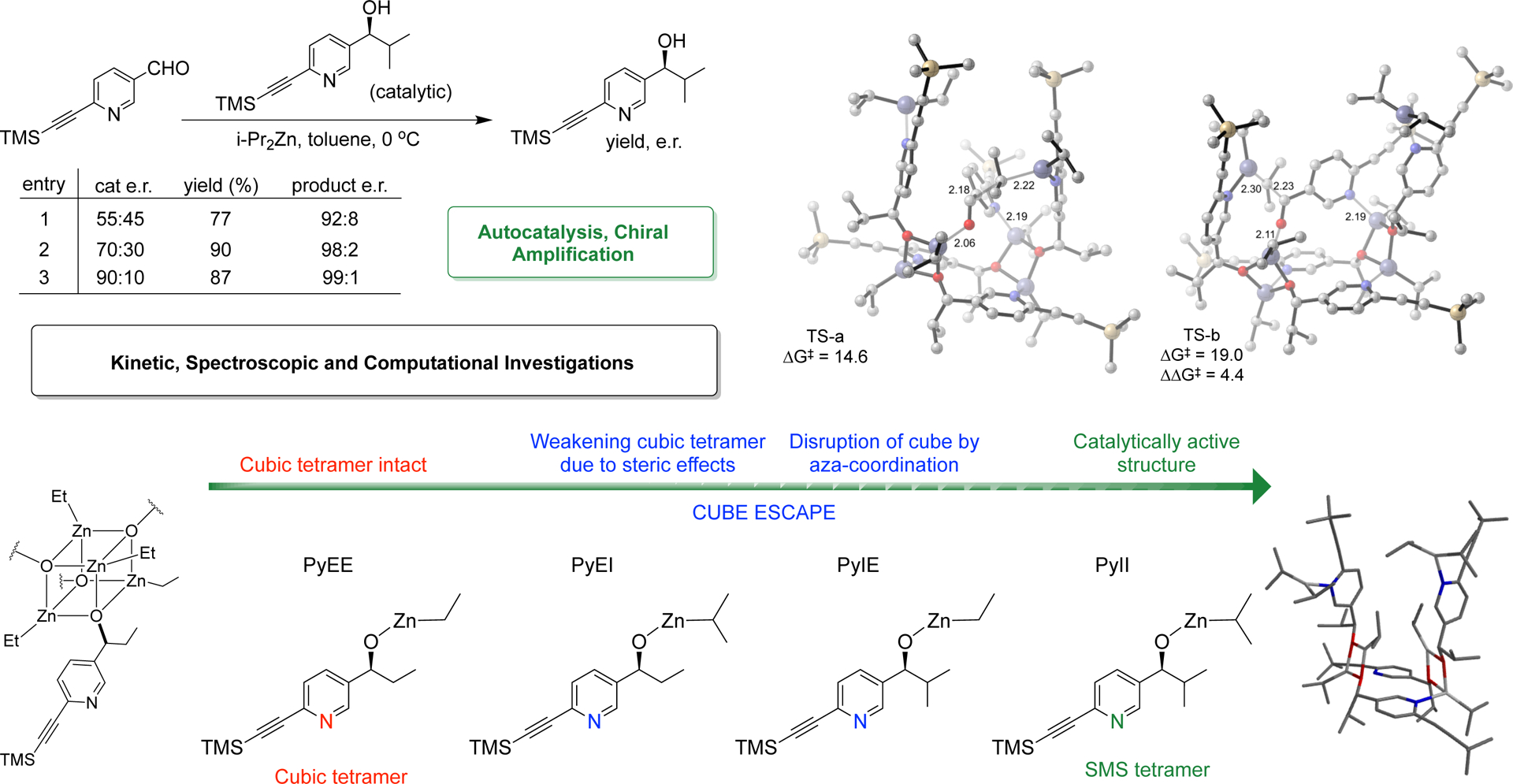Figure 8.

Origin of non-linearity in the amplifying, autocatalytic reaction – DFT studies for comparison of catalysis by the heterochiral (panel a and black graphic in panel c) and homochiral (panel b and green graphic in panel c) PyII tetramers. The heterochiral tetramer is thermodynamically preferred to the homochiral tetramer by 2.1 kcal/mol (Grel numbers in blue). A floor-to-floor substrate binding to the heterochiral tetramer is impossible, because the requisite, unsaturated zinc atoms are located on opposite sides of the macrocycle. Alkyl transfer can thus occur only through a single-point binding pathway (int-rac and TS-rac), which is overall disfavored. Panel c summarizes the comparison in the form of a relative energy diagram. The disfavored binding to the heterochiral SMS tetramer (red, 14.8 kcal/mol) as compared to the homochiral SMS tetramer (red, 2.9 kcal/mol) results in the disparate activities of the two tetramers – catalysis by the latter (green pathway) is highly preferred over the former (black pathway). This thermodynamic preference for the heterochiral tetramer, along with its catalytic incompetence gives rise to the non-linear effect in the Soai reaction. Energies are calculated at the M06–2X/def2-TZVPP–SMD (toluene)//B3LYP/6–31G(d) level of theory and reported in kcal/mol. Purple, zinc; yellow, silicon; red, oxygen; blue, nitrogen; gray, carbon. Hydrogens are hidden for clarity. ΔG0, free energy of binding. ΔG‡, free energy activation barrier.
